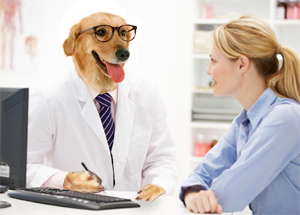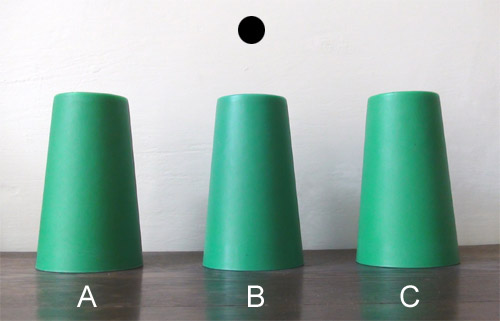Research Shows Dogs Have X-Ray Vision
 For many years it was believed that dogs are colour blind until research showed that they can in fact distinguish colours, although not as many as we can. Dogs don’t have as many cones as humans, which are receptor cells that detect colour.
For many years it was believed that dogs are colour blind until research showed that they can in fact distinguish colours, although not as many as we can. Dogs don’t have as many cones as humans, which are receptor cells that detect colour.
But what dogs lack in cones, they make up for in rods - another type of receptor cell that detect light and dark. Their abundance of rods means dogs have far better low light vision than ours but it now seems that a dog’s visual abilities are far more advanced even than that.
Ground breaking new research shows that dogs can not only see better in the dark than us, they can also filter the density of objects, essentially giving them x-ray vision. Heading the project at a research facility in The Netherlands, Dr. Polli Roaf explains that most animals exist in non-cluttered environments and their sideways facing eyes give them the ability to see in panoramic vision. Humans and other mammals that exist in cluttered environments have evolved eyes that point in the same direction. As the eyes become more forward facing, the binocular region of the eyes intensifies.
In dogs, the binocular field of vision is half that of humans. It is the intensity of this smaller region combined with the increased number of rod receptor cells that not only makes dogs more receptive to light and dark but also how dense matter is.
Dogs have an amazing sense of smell, up to 10,000 times of that of a human, and it has always been believed that this is how they can detect a cat behind a fence or an old bone buried in the garden, but this new evidence has lead researchers to suggest that a dog’s amazing perception is actually due to their x-ray vision.
Due to evolutionary differences, we can't match dogs in this ability but we can pick up the presence of high density objects to some extent. Take a look at the photograph below. There are three semi-opaque cups. Under one of the cups is a solid metal object. Focus on the black dot for 5-10 seconds, to engage your binocular vision, then see if you can see which cup is hiding the object.

After 3 years of research at a private facility in Den City, The Hague, Dr. Polli Roaf and her team are releasing the scientific findings to the international community at a conference today. The findings could have far reaching implications regarding the potential uses of these amazing visual abilities, including dogs helping to detect osteoporosis, broken bones and swallowed or foreign objects. It seems it won’t be long before your local GP is more likely to bark than quack.

Amazing! I couldn't see anything under the cups but I think Tala my Staffie could. She got very excited & woofed at the middle one ;)
Sadly not correct Tala.
OK, time to fess up. This was an April Fool. We hope you enjoyed it :-)
Hello there. I have seen this was an april fools prank, however. I arrived at this post looking for unfo. I recently broke a toe (kicked a chair leg ) and although the skin wasnt broken, no blood just a fractured toe, whilst lying on the sofa, one of my dogs jumped up, sniffed my toe and started licking it. He did this every night for the 3 week i was on crutches and then just stoped. Same time as my toe was better.
I recently broke my ankle and my dog will come up, sniff it and start licking it. I came to this page to find out if that was a proven scientific thing. 🙂
After 5 minutes of careful observation I think there is a similar Black ball under the middle glass .... I am writing this before reading any comments .